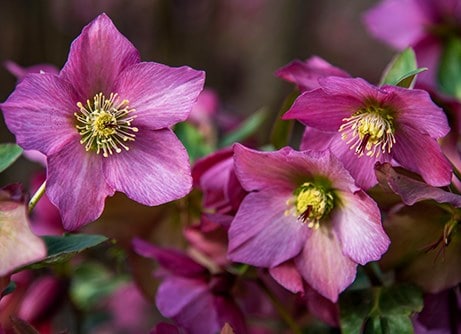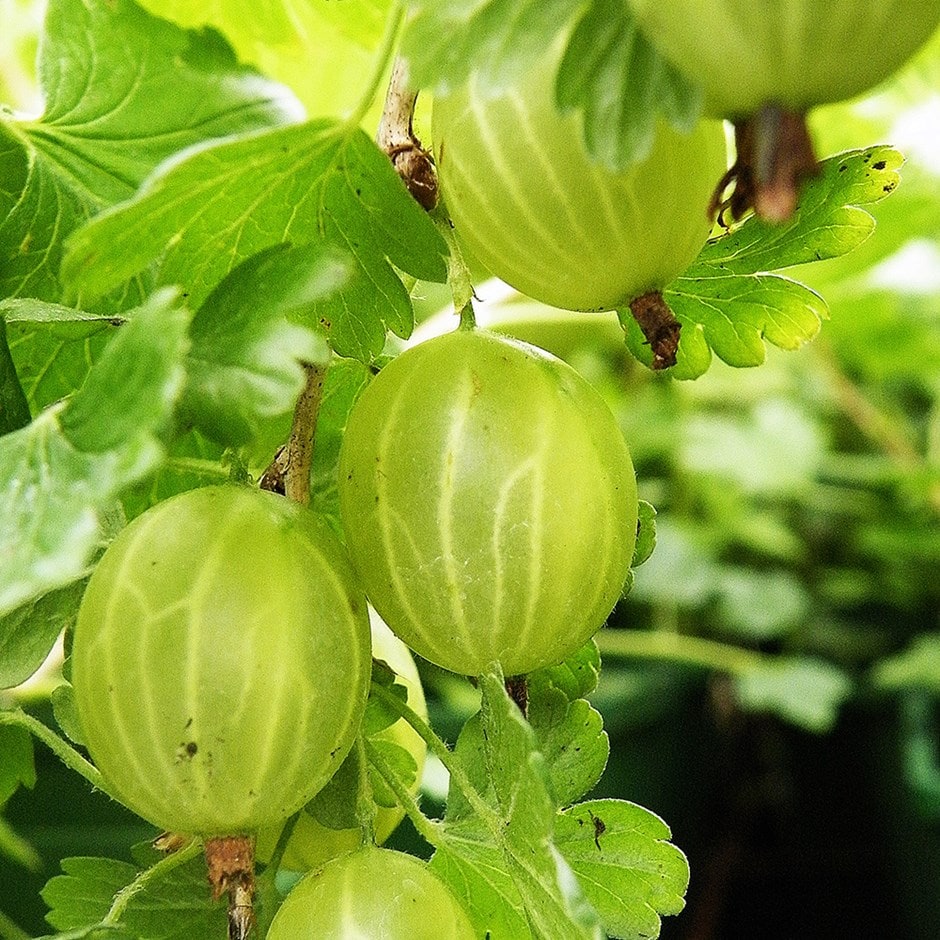Prepare the ground well before planting. Remove all weeds and dig in plenty of well-rotted manure into the area. Space at 1.5m (5ft) intervals and once planted, apply a mulch of well-rotted manure every spring, as well as a nitrogen and potassium fertiliser. Make sure the plant is watered in dry weather and net the bushes to protect the fruit from birds.
Gooseberries are often grown as open-centred bushes with a good branching structure on a short stem and fruit on one year old wood. Prune in late winter/early spring. In the first year, prune all the shoots by 50-75% in winter. Tip prune any previously pruned shrubs to encourage the formation of side shoots. In their second winter, choose 8 to 10 of these new stems to form the main framework and shorten them by up to 25%. Remove any remaining shoots that are growing into the centre of the bush or are crossing/rubbing against other branches. Finally cut back all the remaining shoots to within four buds from the main stems.
In subsequent years, the plant can be pruned in two ways. Establishing fruiting spurs will produce a small crop of larger fruits, while removing whole branches right back to their base will produce a bigger crop of smaller fruit. To form fruiting spurs, cut back all the shoots that have formed in the previous year to a bud approximately 8cm (3in) from the point where it joins the main stem. New branch leaders should also be cut back to within a few buds of the older wood. Alternatively, completely remove old, weak or crossing branches to open up the centre of the bush and then cut back any growth that is coming from below 10cm (4in) above ground level.











